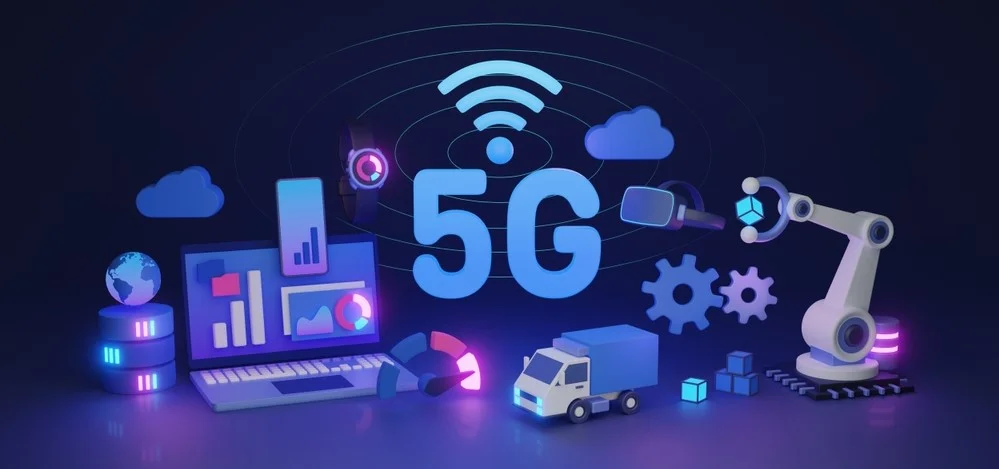Exploring the Impact of 5G on the Telecommunications Industry
- By -Mash
- Posted on
- Posted in Telecommunications
The introduction of 5G technology marks a significant milestone in the evolution of telecommunications, promising to revolutionize the industry and transform various aspects of modern life. With its advanced capabilities, 5G offers unprecedented speed, lower latency, and increased connectivity, setting the stage for a new era in telecommunications. This article explores the impact of 5G on the telecommunications industry and the broader implications for businesses and consumers.

Transforming Network Performance
Enhanced Speed and Bandwidth: One of the most significant advancements with 5G is its ability to deliver vastly higher speeds compared to previous generations. With theoretical speeds reaching up to 10 Gbps, 5G networks offer faster download and upload speeds, which can dramatically improve the performance of data-intensive applications and services.
Reduced Latency: 5G technology significantly reduces latency, achieving as low as 1 millisecond compared to the 30-50 milliseconds of 4G. This reduction in latency enables near-instantaneous communication and response times, which is crucial for applications requiring real-time interactions, such as autonomous vehicles, remote surgery, and online gaming.
Increased Network Capacity: 5G networks are designed to handle a much higher density of connected devices simultaneously. This increased capacity supports the growing number of Internet of Things (IoT) devices and smart technologies, ensuring that network performance remains reliable even in highly connected environments.
Driving Technological Innovation
Enabling the Internet of Things (IoT): 5G is a key enabler of IoT, providing the high-speed connectivity required for seamless communication between a vast array of smart devices. From smart homes and cities to industrial automation, 5G facilitates the integration and functionality of IoT applications, driving innovation across multiple sectors.
Advancing Augmented and Virtual Reality: Augmented Reality (AR) and Virtual Reality (VR) applications benefit greatly from 5G’s high speeds and low latency. Enhanced connectivity allows for more immersive and interactive experiences, supporting advancements in entertainment, education, training, and remote collaboration.
Supporting Autonomous Vehicles: The low latency and high reliability of 5G are critical for the development and deployment of autonomous vehicles. Real-time data transmission and processing are essential for vehicle-to-vehicle (V2V) and vehicle-to-infrastructure (V2I) communication, enabling safer and more efficient transportation systems.
Transforming Business Operations
Improving Enterprise Connectivity: 5G enhances enterprise connectivity by providing faster and more reliable connections. Businesses can leverage 5G to support cloud computing, real-time data analytics, and remote work solutions, leading to increased productivity and operational efficiency.
Enabling Smart Cities: 5G technology is instrumental in the development of smart cities, where interconnected systems and sensors improve urban infrastructure and services. From smart traffic management to energy-efficient building systems, 5G supports the creation of more sustainable and responsive urban environments.
Enhancing Remote Collaboration: The superior performance of 5G networks facilitates high-quality video conferencing, real-time collaboration, and cloud-based applications. Businesses can benefit from improved remote work capabilities and enhanced collaboration tools, driving innovation and efficiency.
Impact on Telecommunications Providers
Infrastructure Investment: The rollout of 5G requires significant investment in new infrastructure, including base stations, antennas, and spectrum licensing. Telecommunications providers are investing heavily in upgrading their networks to support 5G, which involves substantial capital expenditure and strategic planning.
Competition and Market Dynamics: The introduction of 5G has intensified competition among telecommunications providers as they strive to offer the fastest and most reliable networks. Providers are developing new pricing models, service offerings, and partnerships to differentiate themselves and capture market share.
Revenue Opportunities: 5G opens up new revenue streams for telecommunications providers through advanced services and applications. Providers can monetize 5G capabilities by offering enhanced connectivity solutions, IoT services, and enterprise solutions, creating additional business opportunities.
Addressing Challenges and Considerations
Security and Privacy: With the expansion of 5G networks, there are increased concerns about security and privacy. The heightened connectivity of IoT devices and the increased data flow require robust security measures to protect against cyber threats and ensure user privacy.
Regulatory and Health Concerns: The deployment of 5G technology has sparked discussions about regulatory compliance and potential health impacts. Telecommunications providers must navigate regulatory requirements and address public concerns regarding the safety of 5G infrastructure.
Digital Divide: While 5G offers transformative benefits, there is a risk of exacerbating the digital divide if deployment is concentrated in urban areas. Ensuring equitable access to 5G technology across diverse regions is essential for maximizing its benefits and promoting digital inclusion.
Conclusion
The impact of 5G on the telecommunications industry is profound, driving advancements in network performance, enabling innovative technologies, and transforming business operations. As 5G continues to roll out and mature, it will shape the future of connectivity, offering new opportunities and challenges for telecommunications providers, businesses, and consumers alike. Embracing the potential of 5G will be key to leveraging its benefits and advancing toward a more connected and technologically advanced world.



